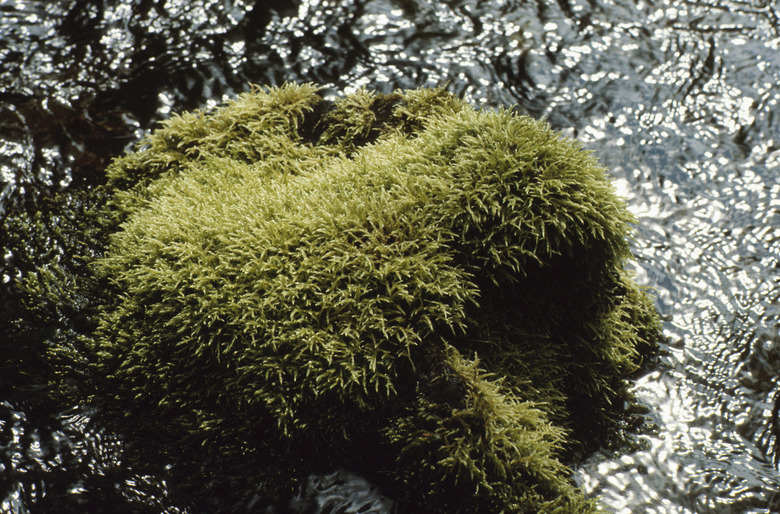Lime To Kill Moss
Mosses of several species commonly out-compete turf grasses. These plants spread through spores, which blow in the wind and settle in areas where grass is weak, thin or intermittent. Moss establishes itself quickly. Little to no grass grows in areas dominated by moss, as the presence of moss prevents grass seed from establishing. Lime proves useful in the management of moss, but not necessarily in the way that many gardeners believe.
Lime and Moss
Many gardeners believe that lime kills moss. Expert resources such as the gardening extensions of Washington State University, Clemson University and the University of Connecticut attest that lime does not kill moss. This commonly held belief arises from the fact that lime may help control and diminish moss populations by encouraging the spread and dominance of turf grass in areas where it competes with moss species. However, even when used for such purposes, lime isn't always effective in controlling moss.
Lime and pH
Lime, and more particularly agricultural or dolomitic lime, raises the pH of soil. By raising the pH level of soil, these types of limes make soil less acidic. Many moss species prefer acidic soil while turf grass flourishes in neutral soil. Thus when applied to soil, lime makes conditions less hospitable to moss species and more hospitable to turf grass. This change in conditions may give grass an advantage when competing against moss for dominance in a particular area. However, lime does not constitute a foolproof method of moss control. In fact, in alkaline soils with high pH, the application of lime may increase moss presence.
Applying Lime to the Lawn
Measure the pH of soil before making any attempt to use lime as a moss control. If soil proves alkaline or neutral, or posses a pH measurement of 7 or more, do not apply lime. For acidic soils, or those with pH levels of 5.5 or below, apply 50 lbs. of dolomitic limestone per 1,000 square feet of garden surface. Apply ground limestone and pelletized limestone at the same rate for pH change, or apply burned limestone at a rate of 10 lbs. per 1,000 square feet or hydrated limestone at a rate of 20 lbs. per 1,000 square feet. Burned and hydrate limestone may prove hazardous and are difficult to apply. Mix lime in with soil for the best results.
Other Methods of Moss Management
Moss grows in conditions often unfavorable to grasses. To control moss in lawns and encourage turf grass growth, modify conditions such as shade, soil and water levels. Moss grows in deeper shade than grass. If moss out-competes grass, introduce more sunlight to the area by pruning large plants and cutting existing grass shorter to expose moss to the sun. Moss also tolerates compacted soil, while grasses don't. Remove compacted grass and introduce loose, well-aerated soil with a pH range of 5.8 to 6.5 to encourage optimal grass growth. Reducing moisture by withholding irrigation helps prevent the spread of moss. Removing moss from the ground by hand or raking it up provides a sure form of control though may also be very time consuming and laborious.
